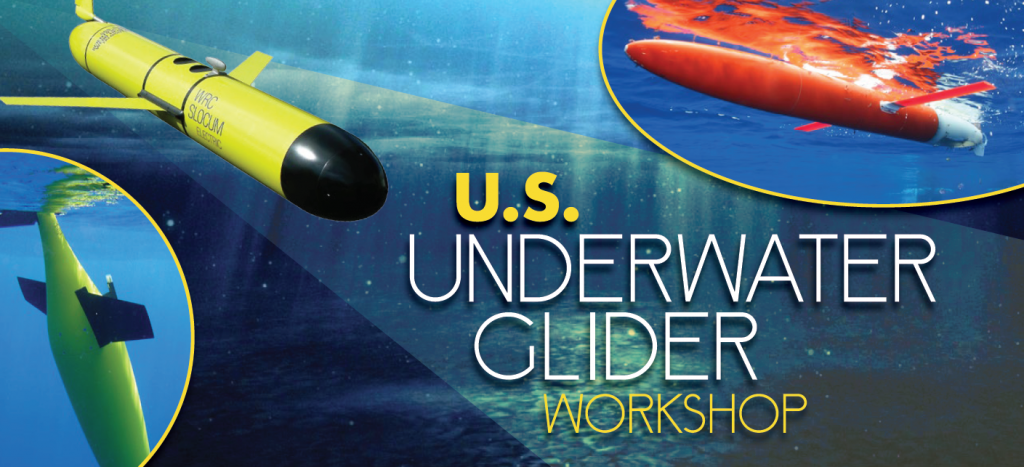The first U.S. Underwater Glider Workshop held January 18-19, 2017 at the INFINITY Science Center, MS served as a forum to strengthen coordination of underwater glider activities across the United States and beyond.

Workshop Materials
Workshop Outcomes
INITIATE THE UNDERWATER GLIDER USER GROUP UG2
Initiating the Underwater Glider User Group (UG)2 is the top priority to provide the centralized platform needed to springboard many of the recommended actions. A steering team comprised of national representatives will drive the agenda and activities for (UG)2, maintaining international connections.
IMPROVE DATA AND INFORMATION SERVICES
Improved glider data management results in optimized utility for ocean stakeholders. Sending open glider data through the IOOS Glider Data Assembly Center (DAC) is a method to build on an established platform integrating glider data in the same formats and making the data accessible to all users. There is also a need for a glider data management working group to drive standardization across glider programs and address other data issues, which could serve as a sub-group of (UG)2 and boost Glider DAC activities. These efforts will likely require staff support and additional logistics to facilitate glider data standard development.
EXPLORE AND ENCOURAGE ASSET AND PLATFORM SHARING
Many workshop attendees are eager to leverage resources to expand the reach of the gliders and the data collected. Platform sharing business models, such as the University-National Oceanographic Laboratory System (UNOLS) fleet, Uber/Lyft ride-sharing services, or even a rental car organization, are the types of innovative mechanisms needed to get gliders that are on shelves into the water collecting valuable subsurface data. All of these models would require significant discussions and agreements to ensure fairness and safety to all parties.
At a minimum, a forum could be established for operators to share plans and needs. Those with resources could post planned missions to which they are willing to add sensors, while those seeking glider support in the form of deployment and recovery, piloting, and maintenance could solicit help in a shared space.
ENGAGE INTERNATIONAL UNDERWATER GLIDER COMMUNITIES
Many of the international participants in the workshop were interested in working with U.S. operators and data users to expand their glider capacity and networks. Conversely, U.S. glider program managers are eager to learn from established glider operations abroad. The glider community should expand coordination on international forums such as Everyone’s Glider Observatories (EGO), Integrated Marine Observing System (IMOS), Ocean Networks Canada, Joint Technical Commission for Oceanography and Marine Meteorology (JCOMM) International Steering Team, and potentially others. Beyond strategic planning and information sharing, the U.S. community can seek out specific opportunities to collaborate directly with international glider operators and on shared interest projects.
[awl-slider id=623]

